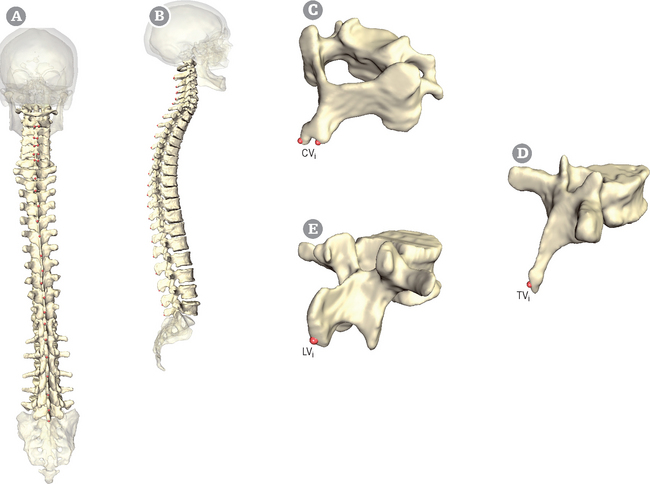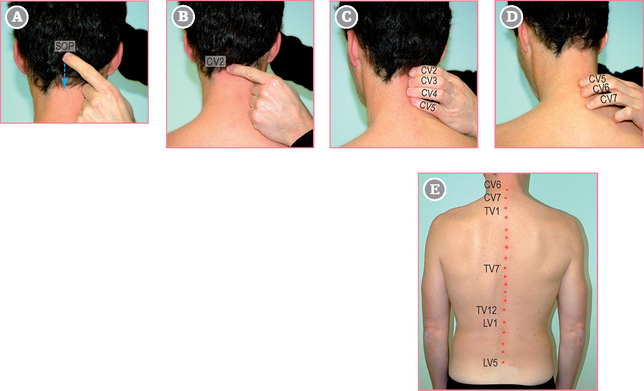4 Spine
Orientation and general presentation (Fig. 4.1)
The spine consists of 33 vertebrae (7 cervical, 12 thoracic, 5 lumbar, 5 sacral fused into the sacrum, 4 coccygeal fused into the coccyx) (Fig. 4.1A,B). The only ‘easily’ palpable structures of the spine are the spinous processes of the vertebrae, except for the first cervical vertebra, which has no spinous process. (Palpation of the sacrum is described independently; see p. 104; palpation of the coccyx is not considered.)
Spine – Spinous process (CV2–CV7, TV1–TV12, LV1–LV5)[M] ISB|Anim 
![]() The palpator sits behind the sitting subject.
The palpator sits behind the sitting subject.
First locate the external occipital protuberance (SOP, see p. 10).
![]() The first palpable spinous process in this area is CV2.
The first palpable spinous process in this area is CV2.
![]() Place your second finger on CV2, and put the other fingers below one another.
Place your second finger on CV2, and put the other fingers below one another.
Mark these landmarks if you are able to palpate them well (see note).
![]() Now, for each spinous process (illustrated here for CV6):
Now, for each spinous process (illustrated here for CV6):
Stay updated, free articles. Join our Telegram channel

Full access? Get Clinical Tree










